St Charles' Hospital
Exmoor Street, Ladbroke Grove, North Kensington, W10 6DZ
Medical dates:
Medical character:
1881 - current
Acute. Later, rehabilitation and mental.
In 1876 potential sites for an infirmary for the sick poor of
the parish of St Marylebone were being considered in the West End,
Hampstead and Ladbroke Grove in North Kensington. The last site
was finally chosen - a 3.5 acre site in Rackham Street costing almost
£8100 - and the foundation stone was laid in 1879.
In 1881 the St Marylebone Union Infirmary was officially opened by the Prince and Princess of Wales.
The building was three storeys high, with a central block and
four pavilions. It had accommodation for 744 patients (372 males
in the two pavilions to the west of the central block and 372 females
to the east) and 86 resident staff (the Infirmary also had 82
non-resident staff).
The staff included a resident Medical Officer, whose annual salary
should have been £500, but the Guardians managed to beat this
down to £450, an Assistant Medical Officer, who earned £150
a year, a dispenser (£120 a year) and a Matron, who earned
between £100-150. The Assistant Matron received
£50-70 a year, while a pavilion nurse earned £28-32.
A day or night nurse received £20-25 a year, while the Head
Night Nurse received £32-38. Accommodation, rations,
uniforms and laundry were included.
In 1884 more land was bought and a Nurses' Home built, which was opened by Princess Christian, daughter of Queen Victoria. Florence Nightingale established a Training School for Nurses at the Infirmary, one of the first in a poor law establishment.
In 1902 an X-ray apparatus was installed and an operating theatre opened.
In 1923 the Infirmary was renamed the St Marylebone Hospital. By
this time it had 732 beds; the patients were mainly chronically infirm
adults and children. The following year an extension adjacent to
the west end of the original Nurses' Home was opened by the then
Minister of Health, Neville Chamberlain
(the extension became known as the Chamberlain Home). In 1926
some wards had bedside wireless sets installed. In 1928 an
internal phone system was installed.
In 1930 the LCC took over administrative charge and renamed it St
Charles' Hospital. New buildings were erected in the open spaces
between the pavilions during the 1930s and, in 1936, another new
Nurses' Home opened. In 1937 new accommodation was built for the
night nurses at the northwest corner of the site, which had previously
been occupied by the doctors' garden (the Chamberlain Home had proved
to be inadequate and noisy). In 1938 an epidemic of infective
enteritis in babies caused several to be admitted. Some died and
this affected the reputation of the Hospital for a while.
In 1939 it became a District General Hospital, but facilities
were inadequate and few operations were performed. For the
duration of WW2 all the top floor wards were closed. A bomb
demolished the southern boundary wall and several windows were blown
out. A few incendiary bombs fell in the open spaces, but the
Hospital survived relatively unscathed.
In 1948 the Hospital joined the NHS under the control of the
Paddington Group Hospital Management Committee. The number of
beds decreased as wards were taken over for other uses. By 1949
there were 400 beds, 260 of which were medical, including 60 for TB
patients, 12 for venereal disease and 45 for children.
During the 1950s the Hospital acquired several Portakabins and an
Out-Patients Department opened. In 1952 an 8-bedded plastic
surgery unit was opened by Sir Harold Gillies (1882-1960).
In 1960 a bleeper system was installed for the medical staff. New
pathology laboratories opened in 1964 and, in 1966, the wards were
modernized. The Peter Pan Ward, with 36 beds, was opened as a
facility for mothers to stay with their children. In 1967 a
modern, fully air-conditioned twin operating theatre with anaesthetic
and recovery rooms was built. The following year a new plastic
surgery ward was opened by Lady Gillies.
The Out-Patients Department was extended in 1972 and, in 1973, a Paediatric Department was opened by Sir Keith Joseph (1918-1994), Secretary of State for Health and Social Services.
By 1981 the Hospital had 350 beds with 600 staff (one-third of whom
were resident), reversing the earlier situation when there had been
more beds than staff. 104 beds were for general medical cases, 81
surgical, 36 orthopaedic, 36 paediatric and 63 for the elderly.
The wards were upgraded and the following year plans were made
for a new psychiatric and psychogeriatric unit to be established
between the main Hospital and St Marks Road, giving an extra 116 beds
and 120 places in a Day Hospital.
In-patient services gradually reduced though and, by 1998, the Hospital
had 120 beds. The site became underused and its future uncertain.
In 2007 NHS Direct closed its call centre based at the Hospital.
The Hospital is currently managed by Kensington and Chelsea Primary
Care Trust (PCT), although historically most in-patients had been from
Westminster. The PCT runs a Minor Injuries Unit, a palliative
care centre and a pharmacy; there are 61 beds for patients requiring
rehabilitation. About one-third of the site is occupied by a
Mental Health Centre operated by the Central and North West London Mental Health Trust (CNWL).
Present status (September 2009) |
|---|
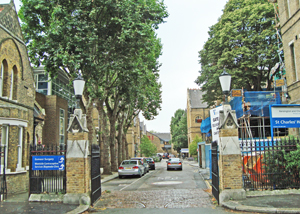
The entrance driveway in Exmoor Street.
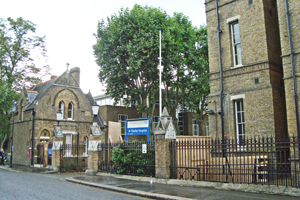
The porter's lodge is to the left of the entrance drive.
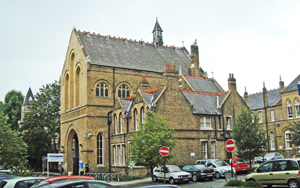
The main entrance building is along and to the right of the main driveway.
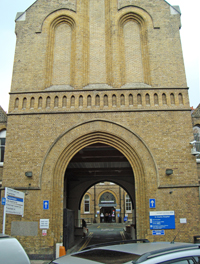
The former Hospital chapel is located above the entrance archway.
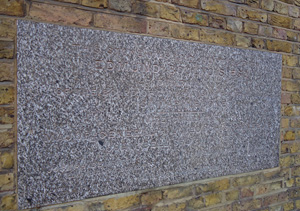
The barely legible 1879 foundation stone is on the left side of the archway. It was laid on July 7th 1879 by Edmund Boulnois, Chairman of the Board of Guardians for the parish of St Marylebone, and his two Vice-Chairmen.
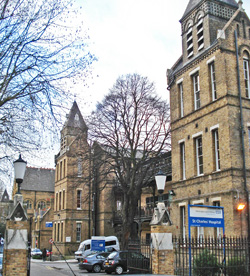
The Hospital frontage along Exmoor Street.
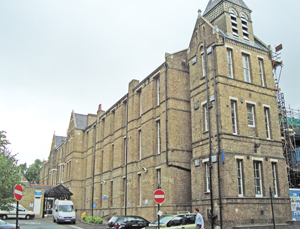
Ward blocks on the eastern part of the site.
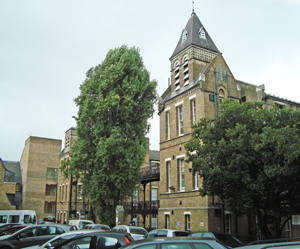
Ward blocks at the western side (above and below).
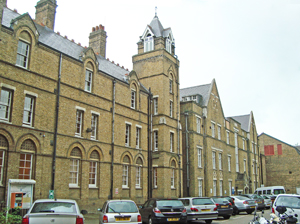
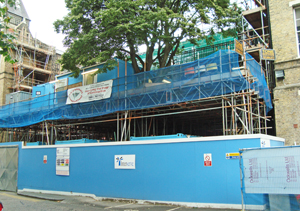
One of the eastern ward blocks is currently undergoing reconstruction to become the community hospital.
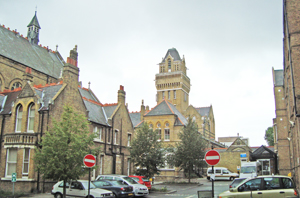
The water tower as seen from the drive.
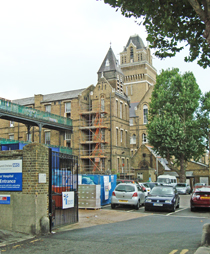
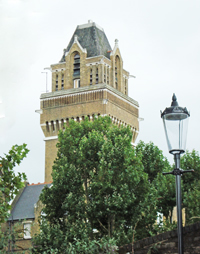
The goods entrance (left). The water tower (right) in the north courtyard is now a gym.
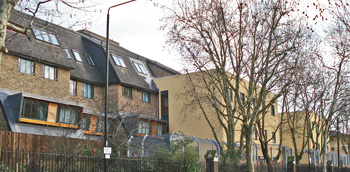
The modern Psychiatric Intensive Care Unit with 10 beds backs onto St Marks Road and is owned by CNWL (above and below).
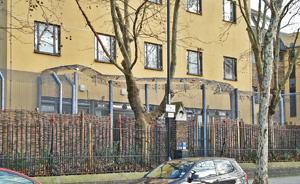
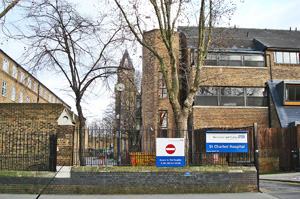
The back of the Hospital from St Marks Road.
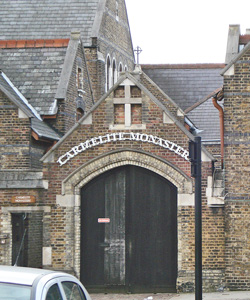
Nothing at all to do with the Hospital: the Carmelite Monastery of the Most Holy Trinity, on the northwest corner of St Charles Square, is adjacent to St Charles' Hospital and has its entrance in Exmoor Street.
Update: March 2011
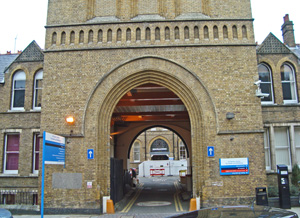
New signage for the St Charles' Centre for Health and Wellbeing (above and below).
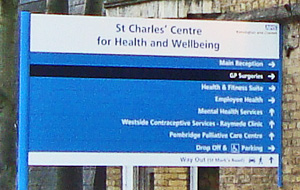
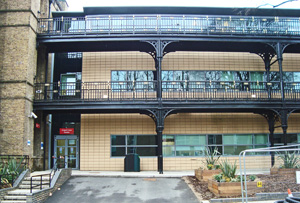
The Urgent Care Centre.
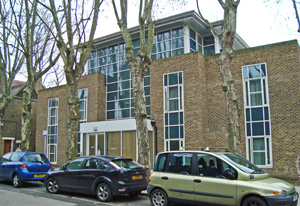
The E.C.T. Suite is located in a modern building.
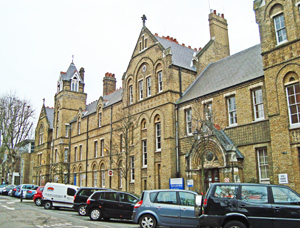
Nightingale House on the southern part of the site provides mental health care for older people.
Update: December 2015
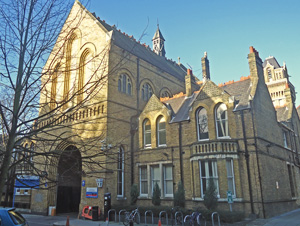
The main entrance to the Hospital is through the archway on the left.
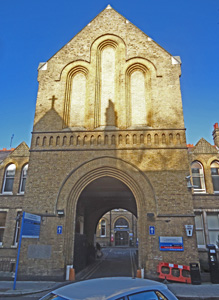
The former chapel is above the entrance arch.
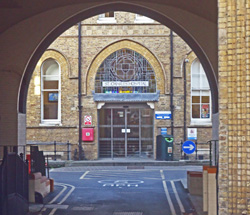
The main entrance to St Charles' Hospital (mental health services) is through the arch.
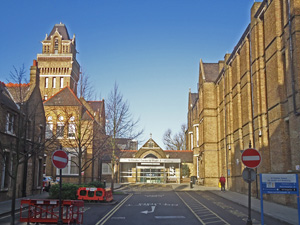
The St Charles's Centre for Health and Well-Being is to the east of the main St Charles' Hospital.
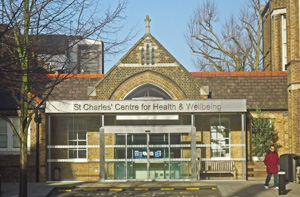
St Charles' Centre for Health and Well-Being.
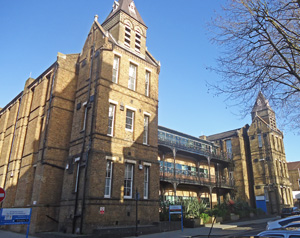
The Urgent Care Centre (above and below).
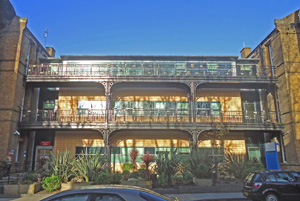
References (Accessed 26th December 2015)
Curle B 1981 St Charles Hospital. A Century of Service 1881-1981. London, Smith Kline & French Laboratories Ltd.
Neate AR 1967 The St Marylebone Workhouse and Institution 1730-1965. London, St Marylebone Society.
https://northkensingtonhistories.wordpress.com